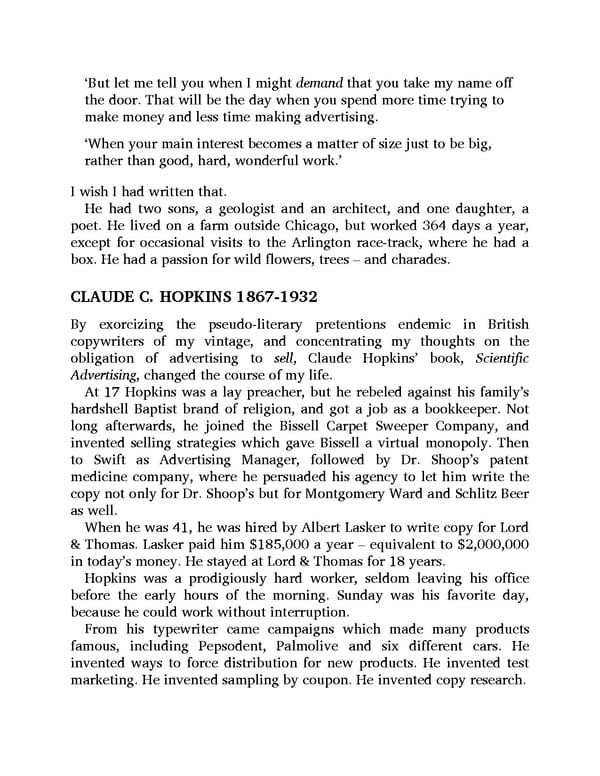‘But let me tell you when I might demand that you take my name off the door. That will be the day when you spend more time trying to make money and less time making advertising. ‘When your main interest becomes a matter of size just to be big, rather than good, hard, wonderful work.’ I wish I had written that. He had two sons, a geologist and an architect, and one daughter, a poet. He lived on a farm outside Chicago, but worked 364 days a year, except for occasional visits to the Arlington race-track, where he had a box. He had a passion for wild flowers, trees – and charades. CLAUDE C. HOPKINS 1867-1932 By exorcizing the pseudo-literary pretentions endemic in British copywriters of my vintage, and concentrating my thoughts on the obligation of advertising to sell, Claude Hopkins’ book, Scientific Advertising, changed the course of my life. At 17 Hopkins was a lay preacher, but he rebeled against his family’s hardshell Baptist brand of religion, and got a job as a bookkeeper. Not long afterwards, he joined the Bissell Carpet Sweeper Company, and invented selling strategies which gave Bissell a virtual monopoly. Then to Swift as Advertising Manager, followed by Dr. Shoop’s patent medicine company, where he persuaded his agency to let him write the copy not only for Dr. Shoop’s but for Montgomery Ward and Schlitz Beer as well. When he was 41, he was hired by Albert Lasker to write copy for Lord & Thomas. Lasker paid him $185,000 a year – equivalent to $2,000,000 in today’s money. He stayed at Lord & Thomas for 18 years. Hopkins was a prodigiously hard worker, seldom leaving his office before the early hours of the morning. Sunday was his favorite day, because he could work without interruption. From his typewriter came campaigns which made many products famous, including Pepsodent, Palmolive and six different cars. He invented ways to force distribution for new products. He invented test marketing. He invented sampling by coupon. He invented copy research.
 Ogilvy on Advertising Page 287 Page 289
Ogilvy on Advertising Page 287 Page 289